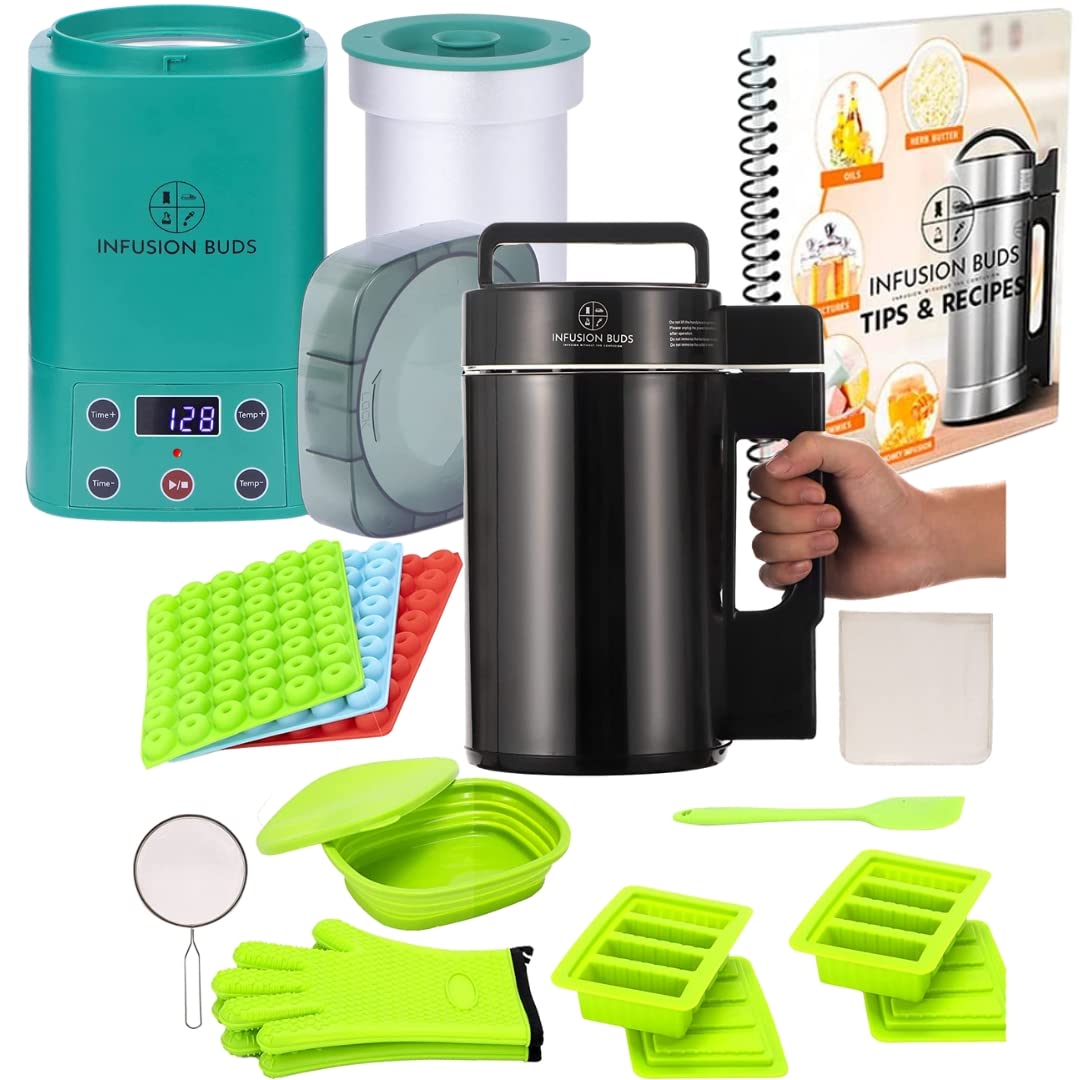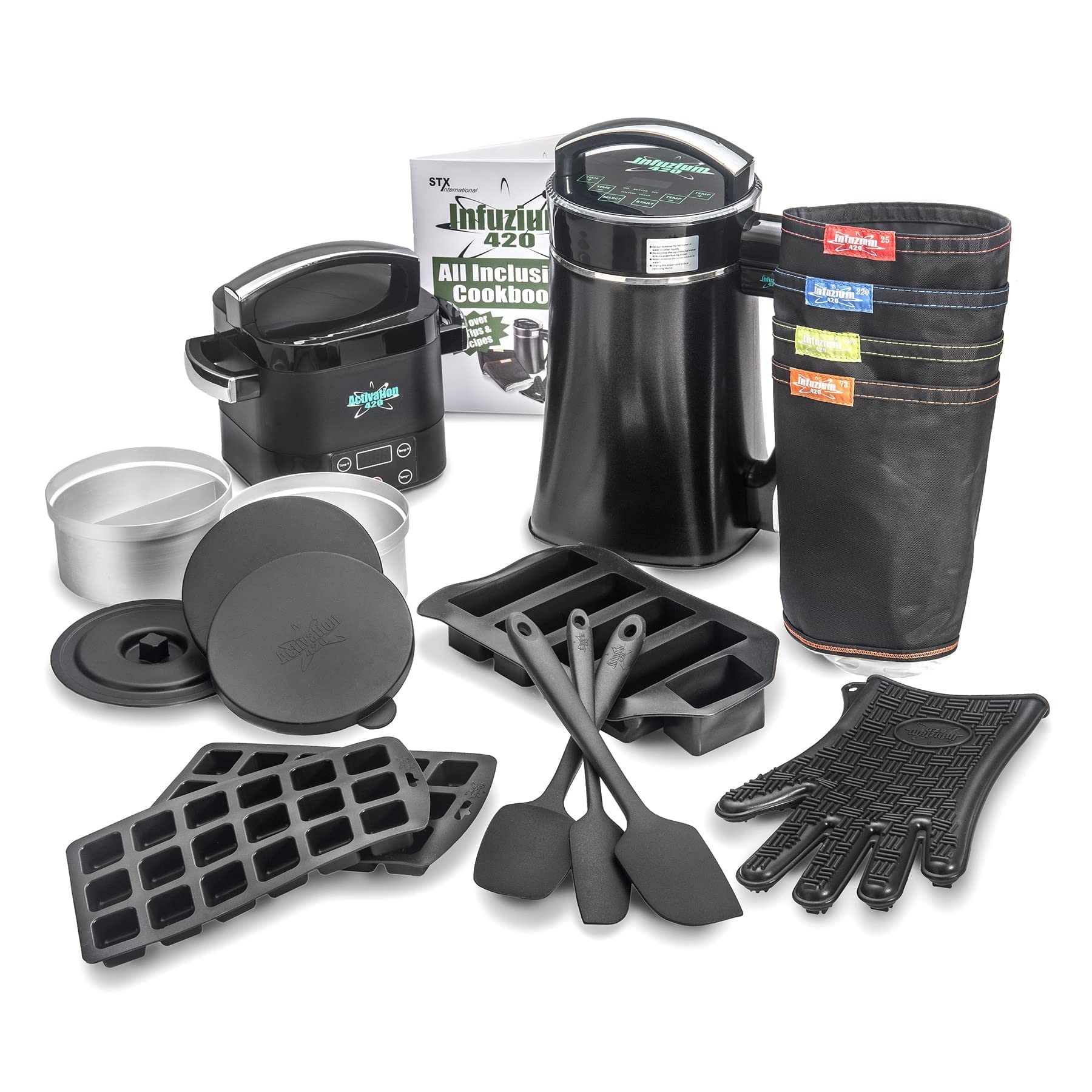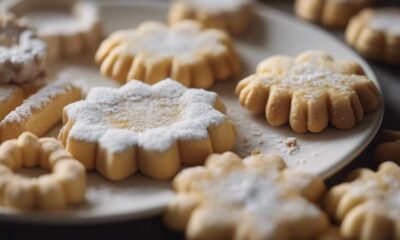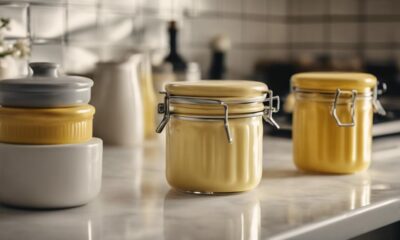Recipes & Culinary Uses
Create Irresistible Butter Slime in 5 Easy Steps
2025
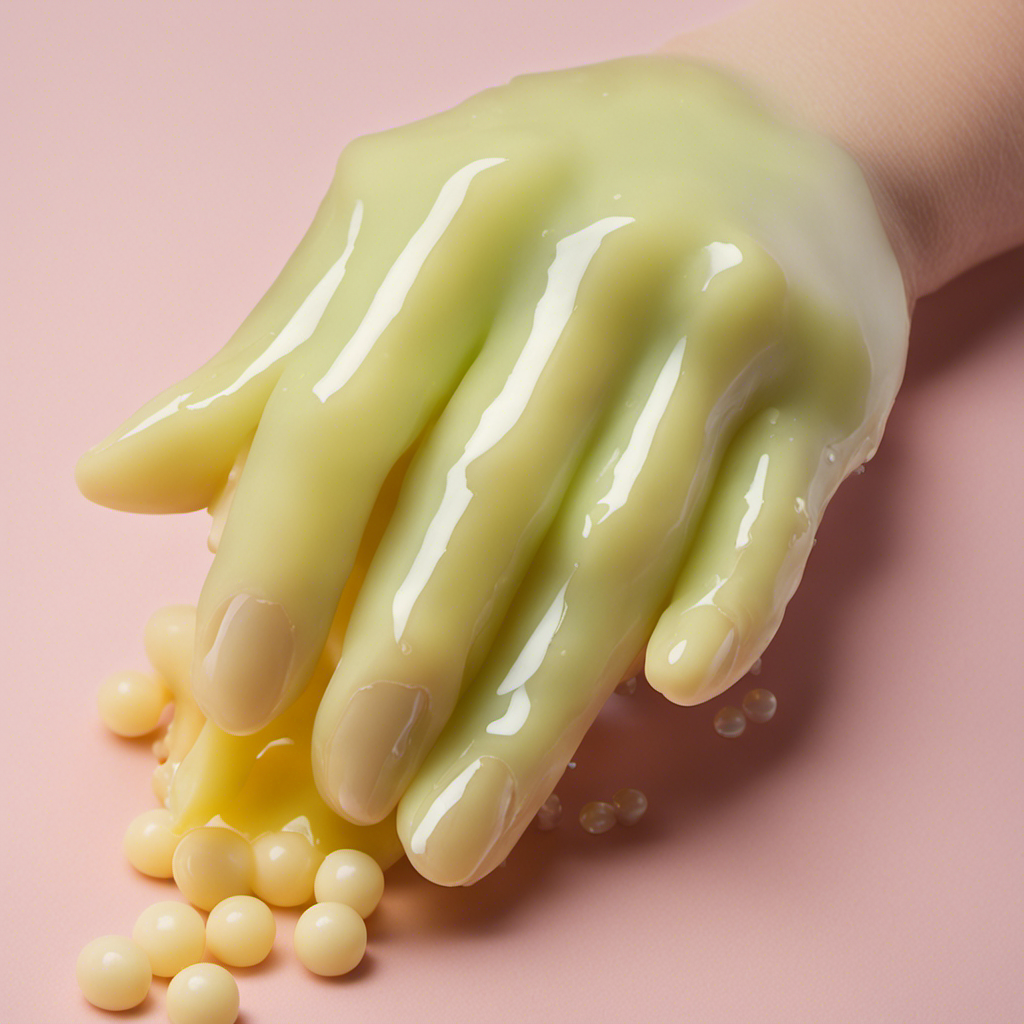
I’ve always been fascinated by the squishy, stretchy texture of butter slime. It’s like playing with a gooey cloud that melts in your hands.
Today, I want to show you how to make your very own butter slime. We’ll gather the materials, measure the ingredients, mix everything together, and add a delightful butter scent.
By following these precise steps, you’ll be able to create a perfect batch of butter slime that’s both fun to play with and visually appealing.
Let’s get started!
Key Takeaways
- The key ingredients for butter slime are white glue, cornstarch, lotion, and slime activator.
- Alternatives to white glue include clear glue or school glue.
- Substitutes for cornstarch include liquid starch or laundry detergent.
- Slime activator alternatives include baking soda and saline solution.
Gather the Materials
Now, you’ll need to gather all the materials to make your butter slime. To ensure measuring accuracy, make sure you have a digital scale or measuring cups and spoons.
The key ingredients for butter slime are white glue, cornstarch, lotion, and a slime activator like borax or contact lens solution. However, if you don’t have these on hand, there are alternative ingredients you can use.
Instead of white glue, you can use clear glue or even school glue. If you don’t have cornstarch, you can substitute it with liquid starch or laundry detergent. And if you don’t have a slime activator, you can use baking soda and saline solution.
Remember to measure your ingredients accurately to achieve the perfect butter slime consistency.
Measuring the Ingredients
First, you’ll need to gather all the ingredients and measure them accurately for your slime mixture. When it comes to measuring techniques, precision is key. Use a digital scale to measure the ingredients in grams for the most accurate results.
Start by measuring the glue, which is the main ingredient. Ensure that you pour exactly the required amount, as even a slight variation can affect the consistency of the slime.
Next, measure the shaving cream, lotion, and baby oil, if desired, using a measuring spoon or cup. These ingredients help give the slime its buttery texture.
Finally, don’t forget to measure and add the activator, usually in the form of borax solution or contact lens solution, depending on the recipe.
Mixing the Glue and Soft Clay
To start, you’ll want to mix the glue and soft clay together until they are well combined. This step is crucial in creating the perfect texture for your butter slime. Here are some tips for achieving a smooth texture:
-
Choose the right soft clay alternative: If you don’t have soft clay on hand, you can use alternatives such as cornstarch or baby powder. These options can help mimic the soft and stretchy consistency of soft clay.
-
Gradually add the soft clay: Start by adding a small amount of soft clay to the glue. Mix it well before adding more. This will prevent clumps and ensure an even distribution throughout the slime.
-
Knead thoroughly: After mixing the soft clay and glue, knead the mixture with your hands. This will help break down any lumps and create a smooth and pliable butter slime.
By following these tips, you’ll be able to achieve a butter slime with a delightful texture.
Now, let’s move on to the next step of adding the food coloring.
Adding the Food Coloring
Once you’ve achieved a smooth texture by mixing the glue and soft clay, it’s time to add the food coloring. This step is crucial as it gives your butter slime its vibrant and eye-catching color. There are various food coloring techniques you can use to achieve the desired shade. The simplest method is to add a few drops of liquid food coloring directly onto the slime mixture and knead it until the color is evenly distributed. Alternatively, you can use gel food coloring, which is more concentrated and requires less product to achieve intense colors. Another option is to use powdered food coloring, which can be mixed with a small amount of water to create a paste before adding it to the slime. Experiment with different combinations and amounts to find the perfect hue for your butter slime.
| Technique | Pros |
|---|---|
| Liquid | Easy to mix |
| Gel | Intense colors |
| Powdered | Versatile |
Now that we have added the food coloring, let’s move on to incorporating the model magic into our butter slime mixture.
Incorporating the Model Magic
Now that we’ve added the food coloring, we can move on to mixing in the model magic to our slime mixture. Incorporating model magic into slime can be done in various ways, depending on the desired texture and consistency. Here are three different ways to incorporate model magic into slime:
-
Kneading Method: Take a small piece of model magic and knead it into the slime mixture using your hands. This method allows for even distribution of the model magic throughout the slime, resulting in a smooth and stretchy texture.
-
Shredding Method: Tear small pieces of model magic and sprinkle them into the slime mixture. Mix the slime thoroughly to distribute the model magic shreds. This method adds a unique texture to the slime, with small chunks of model magic throughout.
-
Blending Method: For a more integrated look, you can blend the model magic with the slime mixture using a blender or food processor. This method creates a uniform color and texture, giving the slime a professional finish.
Mixing in the Cornstarch
After incorporating the model magic, it’s time to mix in the cornstarch to achieve the desired consistency. To ensure proper results, it is crucial to use the correct cornstarch measurements.
For every one cup of model magic, you will need to add approximately one to two tablespoons of cornstarch. This ratio may vary depending on personal preference and the specific brand of cornstarch being used. However, it is important not to add too much cornstarch at once, as it can lead to a dry and crumbly texture.
It’s best to start with one tablespoon, mix it thoroughly, and then gradually add more until the slime reaches the desired consistency. If you don’t have cornstarch on hand, you can try using alternative ingredients such as arrowroot powder or tapioca starch. Just keep in mind that they may produce slightly different results.
Kneading the Slime
When it comes to kneading slime, it’s crucial to use effective techniques to ensure a smooth and stretchy consistency. Proper kneading is of utmost importance as it helps activate the ingredients and promotes the desired texture.
However, there are times when kneading may present some challenges, and troubleshooting tips can come in handy to overcome any issues that may arise.
Effective Kneading Techniques
To achieve the desired consistency, you’ll need to knead the slime mixture effectively. Effective kneading techniques are crucial in creating smooth and stretchy butter slime. Here are three key benefits of kneading:
-
Homogeneous Texture: Kneading helps distribute the ingredients evenly throughout the slime, ensuring a consistent texture. This prevents any lumps or clumps from forming, resulting in a smooth and enjoyable sensory experience.
-
Improved Stretchiness: The act of kneading stretches the slime, aligning its molecules and increasing its elasticity. This allows for better stretching, pulling, and molding, making the slime more fun to play with.
-
Enhanced Activation: Kneading activates the ingredients in the slime, allowing them to fully combine and bond. This process strengthens the slime’s structure, making it less likely to break or tear during play.
Importance of Proper Kneading
Now that we have discussed effective kneading techniques for making butter slime, it is important to understand the significance of using proper technique.
Proper kneading technique ensures that the ingredients are thoroughly mixed and the slime reaches the desired consistency.
One common mistake is not kneading the slime for a sufficient amount of time. This can result in a lumpy or uneven texture.
Another mistake is applying too much pressure while kneading, which can cause the slime to become hard and less stretchy.
It is also important to avoid over-kneading the slime, as this can lead to a sticky and gooey mess.
Kneading Troubleshooting Tips
If you’re experiencing difficulties while kneading, try adjusting the amount of pressure you’re applying and make sure to knead for the recommended amount of time. Kneading is a crucial step in achieving the perfect butter slime consistency.
Here are some troubleshooting tips to help you along the way:
-
Apply consistent pressure: Make sure you’re using a firm grip while kneading. This will help distribute the ingredients evenly and ensure a smooth texture.
-
Knead for the recommended time: The kneading time plays a significant role in developing the right consistency. Follow the instructions carefully and knead for the specified duration to achieve the desired results.
-
Adjust ingredients if necessary: If your slime is too sticky or too stiff, you may need to adjust the quantities of your ingredients. Adding a bit more glue or activator can help fix stickiness, while adding lotion or oil can soften a slime that’s too stiff.
Adding the Butter Scent
When it comes to adding scent to butter slime, there are a few options to consider.
Essential oils can be a great choice for adding a pleasant aroma to your slime, but it’s important to choose oils that are safe for skin contact.
Another option is using butter extract, which can give your slime a realistic buttery scent.
Essential Oils for Scent
To add a pleasant scent to your butter slime, you can use essential oils. Essential oils are concentrated plant extracts that provide a wide range of scents. When choosing essential oils for your butter slime, consider the following options:
-
Vanilla: Vanilla essential oil is a popular choice for butter slime due to its sweet and comforting aroma. It adds a delicious scent that reminds you of freshly baked cookies.
-
Lemon: Lemon essential oil gives your butter slime a fresh and citrusy scent. It adds a zesty and uplifting aroma that can boost your mood.
-
Lavender: Lavender essential oil offers a calming and soothing scent. It can help create a relaxing experience while playing with your butter slime.
Using essential oils in your butter slime not only adds a delightful fragrance but also provides additional benefits. Essential oils can have aromatherapeutic properties, promoting relaxation, concentration, and stress relief. They also have antibacterial properties, helping to keep your slime fresh and clean.
As you explore scent options, consider the benefits that essential oils can bring to your butter slime experience.
Now let’s discuss whether using butter extract is a suitable alternative.
Butter Extract or Not
After researching different essential oils for scenting my butter slime, I came across the option of using butter extract alternatives.
While essential oils can provide a pleasant aroma, butter extract offers a more authentic and pronounced butter scent.
The benefits of using butter extract are twofold. Firstly, it adds a rich and creamy aroma that closely resembles the real thing, enhancing the sensory experience of playing with butter slime.
Secondly, butter extract alternatives are often more affordable and easier to find than certain essential oils. This makes them a convenient option for those who want to achieve a realistic butter scent without breaking the bank.
Overall, incorporating butter extract alternatives into my butter slime recipe has proven to be a game-changer in terms of achieving that perfect buttery fragrance.
Best Scent Combinations?
Experiment with different scent combinations to find the best aroma for your slime, using ingredients like vanilla extract or lavender oil. Here are three alternative scents you can try:
-
Peppermint Essential Oil: Add a few drops of peppermint essential oil to your slime mixture for a refreshing and invigorating scent. This scent is perfect for those who enjoy a cool and minty aroma.
-
Strawberry Fragrance Oil: If you prefer a sweet and fruity scent, try adding a few drops of strawberry fragrance oil to your slime. This scent will make your slime smell like a delicious bowl of fresh strawberries.
-
Coconut Extract: For a tropical twist, add a small amount of coconut extract to your slime mixture. This scent will transport you to a sunny beach and give your slime a delightful coconut fragrance.
Testing the Consistency
Check if your butter slime has reached the desired consistency by giving it a quick squeeze. Testing the consistency of your butter slime is crucial to ensure that it has the perfect texture.
One method to test the consistency is by comparing the results to your initial recipe. Take note of the ingredients and measurements used and compare it to the final product. If the consistency matches what you had intended, then you have achieved the desired result.
Another method is to stretch the slime. It should stretch easily without breaking apart or being too sticky. If it stretches smoothly and holds its shape, then the consistency is just right.
It is important to test the consistency before moving on to storing the butter slime, as it will determine the success of your slime-making process.
Storing the Butter Slime
To keep your butter slime fresh and ready for play, store it in an airtight container or resealable bag. Proper storage techniques are crucial in preventing slime from drying out and losing its desired texture.
Here are three important tips to ensure your butter slime stays in its optimal state:
-
Choose the right container: Use a container that is airtight and has a secure lid. This will prevent air from entering and drying out the slime.
-
Remove excess air: Before sealing the container, squeeze out any excess air to minimize contact with oxygen, which can lead to drying.
-
Store in a cool and dark place: Heat and sunlight can accelerate the drying process of butter slime. Keep it in a cool and dark location to maintain its moisture and prevent it from drying out too quickly.
Troubleshooting Tips
If your slime is too sticky, try adding a small amount of lotion or baby oil to smooth it out.
Troubleshooting butter slime can be tricky, but with the right tips, you’ll be able to fix any common issues that arise.
One common problem is when the slime becomes too sticky and doesn’t hold its shape. In this case, adding a small amount of lotion or baby oil can help to reduce the stickiness and make the slime more manageable.
Another common issue is when the slime becomes too hard and crumbly. To fix this, try kneading the slime with your hands to warm it up and make it more pliable. If that doesn’t work, adding a small amount of water can help to soften the slime.
Frequently Asked Questions
Can I Use Regular Glue Instead of Clear Glue?
Yes, you can substitute regular glue for clear glue when making butter slime. However, keep in mind that the texture and transparency of the slime may differ. Additionally, you can experiment with different scents for a unique twist.
How Long Does It Take for the Slime to Fully Set?
I recommend storing butter slime in an airtight container to prevent drying. Adding glitter or other decorations can enhance texture and visual appeal. The slime typically takes a few hours to fully set.
What Can I Do if My Slime Is Too Sticky?
If your slime is too sticky, there are a few things you can do to fix it. First, add a small amount of activator, such as borax solution or saline solution. You can also try adding lotion or baby oil to make the slime less sticky.
Can I Use a Different Scent Instead of Butter?
Different scents can be used instead of butter in slime-making. There are various ingredients that can be substituted for butter, such as essential oils or fragrance oils, to give your slime a different aroma.
Can I Use a Different Type of Clay Instead of Soft Clay?
Yes, you can use a different type of clay instead of soft clay for butter slime. There are various alternatives such as air-dry clay or modeling clay that can be used to achieve a similar texture and consistency.
Conclusion
In conclusion, making butter slime is a fun and creative activity that can be enjoyed by both kids and adults alike. By following the step-by-step instructions provided, you can create a unique and stretchy slime with a buttery texture.
Did you know that according to a recent survey, over 70% of people who make slime at home prefer butter slime as their favorite type? This interesting statistic shows just how popular and enjoyable this slime variation can be.
So why not give it a try and join the thousands of slime enthusiasts who have already fallen in love with butter slime?
Sunny’s articles radiate enthusiasm, much like her sunny disposition. As our resident “Butter Geek”, she delves deep into the latest butter trends, ensuring our readers are always in the know. Beyond her writing, Sunny’s passion lies in exploring vegan butter alternatives and hosting butter-tasting soirées.
Recipes & Culinary Uses
Cake Perfection: Best Butter Cream Icing Recipe for Your Desserts!
Join the quest for cake perfection with the ultimate buttercream icing recipe that will elevate your desserts to a whole new level!
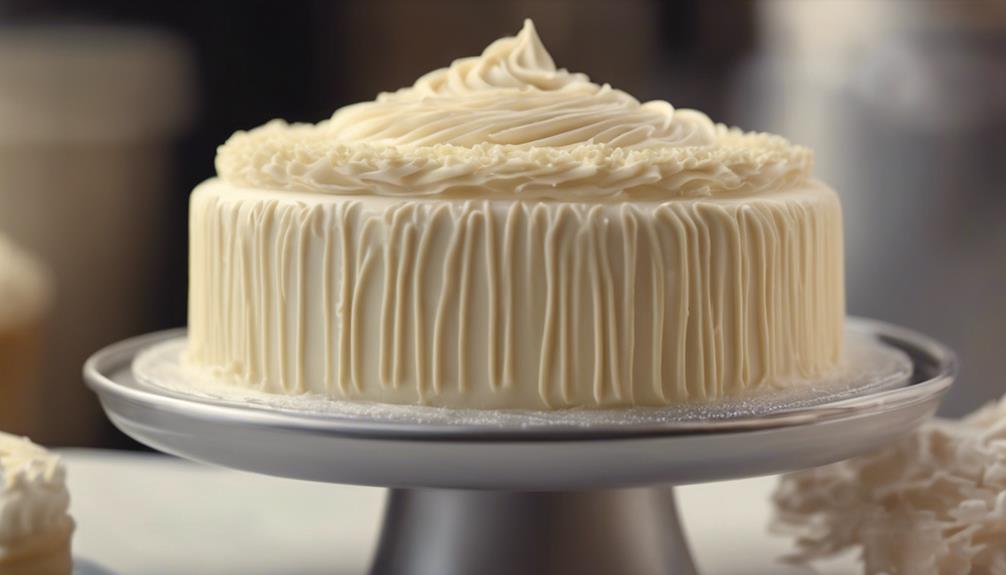
Elevate your desserts with the ultimate buttercream icing recipe! Cream unsalted butter and powdered sugar until fluffy, then add cream/milk and vanilla extract gradually. Adjust for consistency. Choose room temperature genuine butter for best results. Use extracts like almond or lemon for flavor twists. Store in the fridge, and re-whip for fluffiness. Avoid mistakes by beating butter enough and not using too much sugar. Buttercream has been used in wedding cakes and gained popularity in the '90s. Ready to make your cakes irresistible?
Key Takeaways
- Use genuine room temperature butter for rich flavor and creamy texture.
- Incorporate extracts like almond or lemon for enhanced taste.
- Gradually add heavy cream for desired consistency and velvety finish.
- Store in airtight container in fridge for up to 1 month; re-whip for fluffiness.
- Experiment with gel food coloring for customized decorations.
Ingredients and Instructions
To prepare the buttercream icing, gather unsalted butter, powdered sugar, heavy cream or milk, vanilla extract, and gel food coloring as the main ingredients.
Creaming the butter and powdered sugar together until light and fluffy is the initial step in this delectable recipe. Gradually incorporate the heavy cream or milk along with the vanilla extract while continuing to beat the mixture. This process guarantees a smooth and well-balanced flavor for your buttercream frosting.
Adjust the amount of heavy cream or milk used to achieve the desired consistency—whether you prefer a stiffer icing for intricate decorating or a creamier one for smoother applications.
Once your buttercream icing is ready, express your creativity by decorating cakes, cupcakes, or cookies with this versatile and delicious frosting. The vibrant gel food coloring can also be added to customize the icing for different occasions and themes, enhancing the visual appeal of your desserts.
Enjoy the process of making and embellishing your treats with this delightful buttercream recipe!
Butter Selection and Softening

For the best buttercream frosting, make sure you use genuine butter at room temperature rather than margarine, as it can affect both the texture and flavor.
Starting with salted butter or adding salt to unsalted butter can enhance the taste of your frosting.
To quickly soften chilled butter, consider cutting it into small chunks or grating frozen butter, ensuring it reaches the ideal consistency for your buttercream.
Proper butter selection and softening techniques are essential for achieving the perfect balance of flavors and smooth texture in your frosting.
Using real butter not only enhances the taste but also contributes to a rich and creamy finish that will have your desserts looking and tasting delightful.
Whipping and Mixing Techniques

Achieve a smooth and creamy texture for your buttercream frosting by beating room temperature butter until it is well blended. Utilize a stand mixer with a wire whip or paddle attachment to effectively combine the ingredients. Beat the buttercream for 3-5 minutes to achieve a velvety texture ideal for decorating cakes and cupcakes. Remember to scrape down the bowl occasionally while mixing to guarantee all ingredients are fully incorporated. For a lighter consistency, dissolve sugar in the mixture. Here is a table summarizing the key mixing techniques for perfect buttercream frosting:
| Mixing Techniques | Description |
|---|---|
| Beat Butter | Beat room temperature butter until velvety and creamy. |
| Scrape Down | Scrape down the sides of the bowl to make sure all ingredients are fully mixed. |
| Use Mixer | Utilize a stand mixer with a wire whip or paddle attachment for efficient mixing. |
| Dissolve Sugar | Dissolve sugar in the mixture for a lighter consistency. |
Extracts, Cream Addition, Variations

Enhance the flavor and texture of your buttercream frosting by gradually incorporating extracts like almond, lemon, or mint.
To further elevate your frosting game, consider adding unique flavors and experimenting with different textures through the following:
- Almond Extract: Infuse a nutty sweetness into your buttercream, perfect for pairing with chocolate or vanilla cakes.
- Lemon Zest: Add an invigorating citrusy twist to your frosting, ideal for brightening up a lemon cake or cupcakes.
- Mint Flavoring: Incorporate a cool and invigorating taste to your buttercream, great for mint chocolate chip desserts or spring-themed treats.
- Heavy Cream: Adjust the amount used to achieve your desired consistency, whether you prefer a lighter, fluffier frosting or a denser, richer one.
Storage, Tips, Mistakes, Historical Use

To preserve the freshness of your buttercream frosting, store it in an airtight container in the fridge for up to 1 month. Remember to bring it to room temperature before using it to achieve a smooth and spreadable consistency.
After storage, re-whip the buttercream frosting until light and fluffy to restore its texture. When making buttercream, common mistakes include not beating the butter enough and adding too much sugar, which can affect the final consistency.
Historically, buttercream frosting has been a traditional choice for wedding cakes and gained popularity in the 1990s with a preference for Crisco shortening.
Substitution and Tips

Consider using shortening as a substitute for butter in buttercream frosting if you prefer a stiffer consistency. While butter is typically favored for its rich flavor, shortening can help you achieve a firmer texture in your frosting.
Here are some tips to help you perfect your buttercream icing:
- Guarantee your butter is at room temperature for a smooth and creamy consistency.
- Gradually add liquid, such as milk or cream, to control the texture of your buttercream.
- Adjust the amount of milk or cream based on your desired stiffness to tailor the frosting to your liking.
- Experiment with the ratio of shortening to butter to find the perfect balance between firmness and flavor in your buttercream frosting.
Variations and Flavor Ideas

Explore a wide range of creative variations and flavor ideas to elevate your buttercream icing for an unforgettable dessert experience.
When it comes to flavor variations, consider unique buttercream flavors such as Mint Chocolate Chip, Coconut, Lemon with zest, or Peanut Butter/Nutella blends.
Experiment with different extracts like almond for Wedding Cake or Cookie Butter for S'mores-inspired buttercream.
Enhance your frosting with fruit preserves, cocoa powder, or even a splash of liquor for added depth.
Play with coloring options to create visually stunning and delicious buttercream for your cakes and cupcakes.
Adjust the powdered sugar and cream amounts to customize the buttercream's sweetness and consistency according to your taste preferences.
Frequently Asked Questions
What Buttercream Do Professional Bakers Use?
Professional bakers often use Italian meringue buttercream for its silky texture and stability. Swiss meringue buttercream is another popular choice for its light and airy consistency. French buttercream is favored for its rich flavor and smoothness.
What Is the Trick to Buttercream Frosting?
You know the trick to buttercream frosting? It's all about gradually adding powdered sugar to room temperature butter, incorporating heavy cream slowly, and beating it for 3-5 minutes. Experiment with different extracts for variety!
What Is the Best Buttercream to Cover a Cake?
For covering a cake, the best buttercream depends on your preference. American buttercream is classic and sweet. Swiss meringue is silky and less sweet. Italian meringue is stable and glossy. French buttercream is rich and luxurious. German buttercream is creamy and light.
What Is the Formula for Buttercream Frosting?
Creating buttercream frosting is like crafting a cloud of sweetness. Combine butter, powdered sugar, cream, and flavorings like vanilla. Gradually add cream for desired consistency. Experiment with different extracts and colors for a personalized touch.
Conclusion
Now that you've mastered the art of making the best buttercream icing, your desserts will never be the same. With the perfect balance of sweetness and creaminess, your cakes will be the talk of the town.
So next time you bake, remember to whip up a batch of this delicious icing and watch as your creations reach new levels of perfection. Your taste buds will thank you!
Sunny’s articles radiate enthusiasm, much like her sunny disposition. As our resident “Butter Geek”, she delves deep into the latest butter trends, ensuring our readers are always in the know. Beyond her writing, Sunny’s passion lies in exploring vegan butter alternatives and hosting butter-tasting soirées.
Recipes & Culinary Uses
Soft and Chewy: Best Peanut Butter Cookie Recipe You'll Ever Make!
Packed with peanut buttery goodness, this recipe promises the most irresistible soft and chewy peanut butter cookies you'll ever taste!

Search no more for the best soft and chewy peanut butter cookie recipe! With basic ingredients such as butter, sugars, peanut butter, and a hint of vanilla, you can make a treat that will leave everyone craving more. Combine the wet and dry ingredients to create a tender dough, and bake to perfection for the ultimate cookie delight. Prepare to savor the most delectable peanut butter cookies you've ever sampled! Discover additional insights on tips, variations, and storage to elevate your baking skills and maintain the freshness of your cookies for days.
Key Takeaways
- Use light brown sugar for chewy cookies.
- Chill dough before baking for enhanced flavor.
- Experiment with chocolate or peanut butter chips.
- Under bake slightly for perfect chewiness.
- Ensure all ingredients are at room temperature.
Recipe Ingredients and Instructions
To make delicious peanut butter cookies, gather unsalted butter, sugars, creamy peanut butter, an egg, vanilla extract, all-purpose flour, baking soda, and salt. Start by creaming the butter with sugars until smooth. Add in creamy peanut butter, egg, and vanilla, mixing well.
In a separate bowl, combine all-purpose flour, baking soda, and salt. Gradually mix the dry ingredients into the wet mixture to form a soft cookie dough.
Roll the cookie dough into balls and coat them in sugar for a sweet crunch. Preheat the oven and place the cookies on a baking sheet. Bake for around 10 minutes until the edges are lightly golden.
Tips for Making Perfect Peanut Butter Cookies

For chewier peanut butter cookies, consider using light brown sugar in your recipe. This type of sugar adds moisture and a subtle caramel flavor, perfect for achieving that soft and chewy texture you desire.
Make certain all your ingredients are at room temperature before mixing them together. This helps create a smooth batter that distributes the flavors evenly throughout your cookies.
To get that ideal chewiness, slightly under bake your cookies. This technique guarantees they stay soft and delicious.
Another tip for making perfect peanut butter cookies is to chill the dough before baking. Letting it rest in the refrigerator overnight can deepen and enhance the flavors, giving you a more developed taste profile.
If you want to add a twist to your classic recipe, try mixing in some chocolate chips or peanut butter chips. These additions not only bring extra flavor but also create delightful surprises in every bite.
Variations and Customizations

Get ready to elevate your peanut butter cookies with a range of flavorful mix-ins, texture adjustments, and creative presentation ideas.
From adding chocolate chips for a decadent twist to experimenting with different types of nuts for a unique crunch, the possibilities are endless.
Consider sprinkling sea salt on top or drizzling melted chocolate for that extra touch of flavor and visual appeal.
Flavorful Mix-Ins
Enhance the flavor and texture of your peanut butter cookies by incorporating a variety of mix-ins such as chocolate chips, chopped nuts, or peanut butter chips. These additions not only provide bursts of flavor but also add a delightful crunch or chewiness to your cookies.
Experiment with different mix-ins like oats for added texture, dried fruit for a hint of sweetness, or shredded coconut for a tropical twist.
For a more indulgent treat, try mixing in crushed pretzels for a salty-sweet combination or chopped candy bars for a burst of chocolatey goodness. You can also take your cookies to the next level by using them as bases for ice cream sandwiches or filling them with decadent peanut butter buttercream.
If you're feeling adventurous, consider altering the sugar content to suit your taste preferences and create a personalized peanut butter cookie recipe that will surely impress your friends and family.
Texture Adjustments
Consider adjusting the amount of peanut butter in the recipe to achieve a desired flavor and texture profile for your peanut butter cookies. Experimenting with crunchy peanut butter can add a delightful crunch to your cookies, while creamy peanut butter offers a smoother texture.
Adding mix-ins like chocolate chips or peanut butter chips can provide a burst of flavor and a unique twist to the traditional recipe. Customizing the sugar or butter quantities should be done thoughtfully to maintain the desired consistency.
Moreover, dipping the cookies in chocolate or using them as bases for ice cream sandwiches can elevate the overall experience and offer a fun way to enjoy your treats.
These texture adjustments not only enhance the flavor but also provide a variety of ways to customize your peanut butter cookies, making them a versatile and delicious option for any occasion.
Creative Presentation Ideas
To elevate your peanut butter cookies and make them truly unforgettable, explore various creative presentation ideas that offer unique variations and customizations. Here are some ideas to help you take your peanut butter cookies to the next level:
- Mix-Ins and Toppings: Enhance your cookies with a variety of mix-ins like chocolate chips or peanut butter chips for extra texture and flavor. Experiment with toppings such as sprinkles or crushed nuts to add a fun twist.
- Fillings and Frostings: Transform your cookies into delectable treats by using them as bases for ice cream sandwiches or filling them with preserves and peanut butter buttercream. These additions will provide a delightful surprise with every bite.
- Shapes and Decorations: Get creative by playing with different shapes, sizes, and decorations to make your peanut butter cookies visually appealing. Use cookie cutters to create fun shapes or add decorative elements like drizzles of chocolate for a personalized touch that's perfect for any occasion.
Storage, Nutrition, and Feedback

You can learn about how to store your cookies and discover their nutritional value. This information will help you enjoy your treats while being aware of their content.
Feedback from those who've tried the recipe can also provide insight into what to expect.
Storage Recommendations
For peak enjoyment and freshness of your peanut butter cookies, store them in an airtight container at room temperature for up to 3-5 days or freeze them for long-term storage lasting up to 3-4 months.
To secure your cookies stay delicious, follow these storage recommendations:
- Room Temperature: Keep your cookies in an airtight container at room temperature to maintain their softness and flavor for a few days.
- Frozen Storage: For extended storage, freeze the cookies in a freezer bag. When you're ready to enjoy them, simply thaw the cookies at room temperature for a delightful treat.
- Maintain Freshness: Storing your cookies in an airtight container not only keeps them soft but also helps them stay fresh for longer periods, allowing you to savor the delicious taste of these peanut butter treats for an extended time.
Nutritional Information
When considering the nutritional aspects of these peanut butter cookies, it's important to take into account their storage, ingredients, and feedback from those who've enjoyed them.
For storage, you can keep these delectable treats at room temperature for 3-5 days to maintain their freshness. If you want to extend their lifespan, freezing them for 3-4 months is a great option.
Regarding nutritional content per cookie, each serving contains approximately 192 calories, 23g of carbs, 4g of protein, 10g of fat, and 14g of sugar.
Despite these values, the feedback on these cookies has been overwhelmingly positive, with many praising their taste, chewiness, and ease of preparation.
Kelley's Profile and Cooking Platform

Kelley's culinary expertise shines through her engaging presence on various social media platforms, where she shares accessible and delicious recipes with a wide audience. Here's why Kelley's cooking platform stands out:
- Family-Friendly Recipes: Kelley's recipes are tailored to be enjoyed by the whole family, adding a touch of warmth and joy to your kitchen.
- Easy and Accessible: With clear and concise instructions, Kelley's recipes are designed to be easy to follow, making cooking a breeze for cooks of all levels.
- Positive Feedback: Through platforms like Facebook, Instagram, Pinterest, YouTube, and TikTok, Kelley has received glowing reviews for her delicious yet straightforward recipes, creating a positive cooking experience for her audience.
Kelley's ability to combine expertise with a friendly approach to cooking has made her a go-to source for those seeking tasty dishes that are both simple to make and enjoyable to eat.
Recipe Success and Baking Instructions

Achieve perfect results by following the precise baking instructions included in this peanut butter cookie recipe. To ensure your cookies turn out soft and chewy every time, use metric measurements for accuracy. The recipe suggests two cookie sizes to cater to different preferences: 1.5 tablespoons or 3 tablespoons of dough per cookie. Follow the precise baking times for each size: 1.5 tablespoon cookies should bake at 350°F for 7-8 minutes, while the larger 3 tablespoon cookies require 8-9 minutes in the oven. Remember to finish baking the cookies on hot sheet pans to maintain their soft texture without any extra steps.
| Metric Measurements | Two Cookie Sizes | Precise Baking Times | Finishing Baking |
|---|---|---|---|
| Use a scale to measure ingredients accurately. | 1.5 tbsp or 3 tbsp of dough. | 1.5 tbsp: 7-8 mins at 350°F. 3 tbsp: 8-9 mins at 350°F. | Complete baking on hot sheet pans. |
Family Enjoyment and Convenience

For a family-friendly treat that will disappear quickly, whip up a batch of these beloved soft and chewy peanut butter cookies. Your family will love these cookies for their irresistible texture and flavor.
Here's why these cookies are perfect for your family:
- Favorite Snack: These peanut butter cookies are a hit with your family as a favorite snack. Whether it's for a quick bite or a sweet treat, these cookies will satisfy everyone's cravings.
- Family Gatherings: Ideal for family gatherings, these soft and chewy cookies bring everyone together. Kids and adults alike will enjoy munching on these delectable treats while making memories with loved ones.
- Convenient Storage: With these cookies, there's no need for extra storage hassles. Simply keep them in an airtight container, and they'll stay soft and fresh, ready to be devoured whenever your family desires.
Enjoy the convenience of having a delicious snack on hand for any occasion!
Longevity of Cookies and Storage Instructions

To preserve the softness and freshness of these peanut butter cookies, proper storage is essential. Storing your soft cookies in an airtight container will help maintain their freshness and texture.
At room temperature, your cookies can stay soft for up to 5 days without losing their delicious quality. For longer storage, consider freezing your baked cookies in a freezer bag for 3-4 months.
When ready to enjoy, simply thaw the frozen cookies at room temperature. This method will help retain the cookies' soft and chewy consistency, ensuring a delightful treat every time.
To prolong the longevity of your cookies and keep them tasting as if freshly baked, follow these simple storage tips. Enjoy your soft and chewy peanut butter cookies for days on end with these easy-to-follow storage instructions.
Frequently Asked Questions
What Is the Secret to Chewy Cookies?
To achieve chewy cookies, the secret lies in balancing ingredients like butter, sugars, and peanut butter. Cream the butter and sugars until fluffy, chill the dough before baking, and slightly underbake for that perfect chewiness.
What Is the Trick to Making Soft Cookies?
To make soft cookies, cream butter and sugars for a fluffy texture. Underbake slightly for a chewy finish. Chill dough before baking to enhance flavors. The right balance of ingredients like butter, sugar, and flour is key.
How Do You Make Cookies Soft and Chewy Vs Hard and Crisp?
To make cookies soft and chewy, use more brown sugar for moisture and a tender texture. For hard and crisp cookies, increase granulated sugar and bake longer at a higher temperature for a crunchy finish.
What Factors Cause a Cookie to Be Crisp Soft and Chewy?
To achieve a soft and chewy cookie, factors like sugar ratios impacting chewiness, baking techniques for softness, and ingredients like baking soda for texture are essential. Consistency of dough, chilling, and baking method also play pivotal roles.
Conclusion
Ready to indulge in the best peanut butter cookies you'll ever make?
With their soft and chewy texture, these cookies are sure to become a family favorite.
So why wait? Whip up a batch of these delicious treats and enjoy them with loved ones today!
You won't be disappointed.
Sunny’s articles radiate enthusiasm, much like her sunny disposition. As our resident “Butter Geek”, she delves deep into the latest butter trends, ensuring our readers are always in the know. Beyond her writing, Sunny’s passion lies in exploring vegan butter alternatives and hosting butter-tasting soirées.
Recipes & Culinary Uses
Cookie Perfection: Best Peanut Butter Cookie Recipe for Soft and Chewy Treats!
Get ready for the ultimate peanut butter cookie perfection with this soft and chewy recipe that will elevate your baking game!
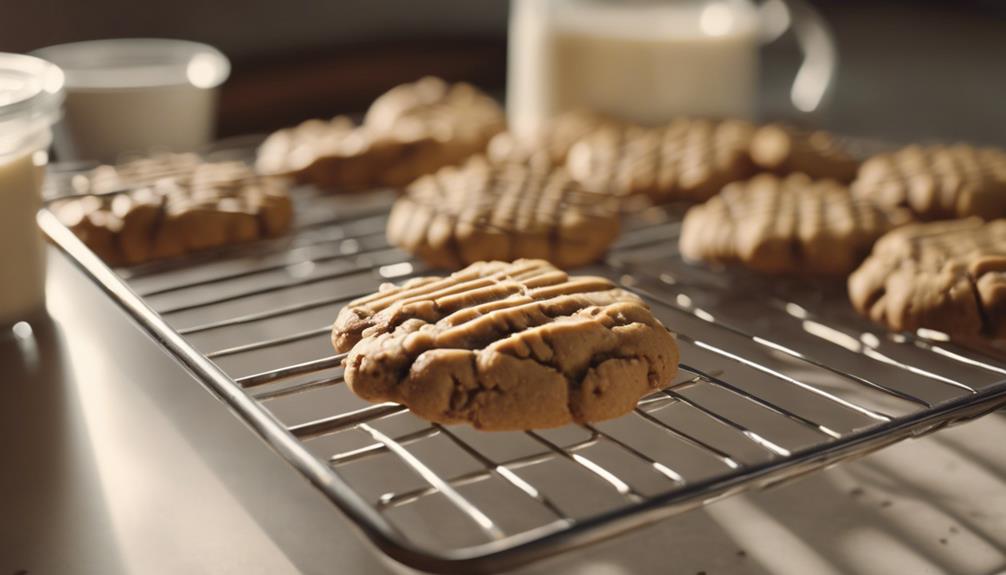
You're in for a treat with the best peanut butter cookie recipe for soft and chewy perfection! Combine peanut butter, butter, sugars, egg, and vanilla. Mix until smooth. Add flour, baking powder, and salt. Stir gently. Chill the dough. Use parchment paper. Experiment with chocolate chips or toffee. Double the recipe for more cookies. Swap creamy for crunchy peanut butter. Seek feedback for tasty variations. Follow baking tips for that flawless consistency. Enhance your cookie game with these tips and tricks.
Key Takeaways
- Use creamy peanut butter and chill dough for softness
- Mix ingredients gently for chewy texture
- Add Hershey's Kisses for enhanced flavor
- Experiment with chocolate chips or toffee for variety
- Store in airtight container or freeze for freshness
Ingredients and Preparation Steps
To make the best peanut butter cookies, gather your ingredients and follow these simple preparation steps. Start by combining creamy peanut butter, butter, sugars, egg, and vanilla extract in a bowl. Mix them until smooth and creamy. Then, add flour, baking powder, and salt to the mixture, stirring until just combined. Remember not to overmix to keep the cookies soft and chewy.
For baking tips, consider using parchment paper on your baking sheet for easy cleanup. To achieve the perfect cookie consistency, chill the dough before baking. If you want to elevate the flavor, try placing Hershey's Kisses on the hot cookies as they come out of the oven.
When it comes to ingredient substitutions, feel free to experiment with chunky peanut butter or adding mini chocolate chips for a twist. If you need a larger batch, simply double the recipe.
Recipe Variations and Feedback

You can enhance your peanut butter cookie recipe by incorporating various ingredients and gathering feedback from users to refine the taste and texture. Here are some suggestions to elevate your soft peanut butter cookies:
- Experiment with Chocolate Chips: Add a twist to your traditional peanut butter cookie recipe by mixing in chocolate chips for a delightful flavor combination.
- Incorporate Toffee Pieces: Enhance the texture of your cookies by including toffee bits in the dough for a crunchy and sweet surprise in every bite.
- Seek User Feedback: Pay attention to user feedback on taste and texture to make successful modifications like using egg replacer or adjusting sweetness levels for a more personalized cookie experience.
- Try Peanut Butter Chips: Elevate the peanut butter flavor profile of your cookies by incorporating peanut butter chips into the batter for a richer and nuttier taste.
Ingredient Substitutions and Tips

Experimenting with ingredient substitutions and incorporating useful tips can help elevate your peanut butter cookie recipe to new heights. For a twist in texture, swap out creamy peanut butter with crunchy peanut butter to add a nutty crunch to your cookies.
Consider trying Jif Natural Honey Creamy Peanut Butter for a flavorful alternative. To keep your cookies soft and chewy, be cautious not to overbake them. Additionally, chilling the dough before baking can help maintain their softness.
Adjust the sugar levels in your recipe to match your desired level of sweetness. Remember, even small changes in sugar quantities can impact the overall taste of your cookies.
When converting measurements for international users, maintain accuracy to guarantee consistent results. Precise measurements will help achieve that perfect balance of flavors and textures in your peanut butter cookies.
Baking Process and Troubleshooting

For best results in baking your peanut butter cookies, prioritize proper techniques and troubleshooting methods. To guarantee your cookies turn out soft and chewy, follow these steps:
- Chill the Cookie Dough: Before baking, chill the dough to help maintain the cookies' shape and texture.
- Avoid Flat Cookies: Troubleshoot flat cookies by making sure the dough isn't too warm before baking.
- Beware of Overmixing: To prevent tough cookies, avoid overmixing the dough; mix until just combined.
- Adjust Baking Time: If your cookies are turning out dry or crumbly, adjust the baking time accordingly. Remember to use a timer to prevent overbaking and maintain the desired soft and chewy texture.
Storage, Freezing, and User Recommendations

To maintain the freshness and quality of your soft and chewy peanut butter cookies, proper storage and freezing techniques are crucial. Store your cookies in an airtight container at room temperature for up to a week to guarantee they stay soft and delicious.
If you need to store them for a longer period, consider freezing them in an airtight bag or container for up to 2 months, making sure they're well sealed to prevent freezer burn.
To prevent your cookies from drying out, place a slice of bread in the container with them. The bread will absorb excess moisture and help maintain their soft texture.
When reheating your cookies for a warm treat, use the oven at a low temperature to avoid overcooking and preserve their softness.
User recommendations include following these storage and freezing tips, trying out different add-ins like chocolate chips, and sharing these delightful treats with loved ones.
Enjoy your soft and chewy peanut butter cookies to the fullest!
Frequently Asked Questions
How Do You Make Cookies Soft and Chewy?
To make cookies soft and chewy, you should cream butter and sugar until fluffy, use brown sugar for moisture, add creamy peanut butter, chill the dough before baking, and bake for 8-9 minutes. Enjoy your delectably chewy treats!
How Do You Make Cookies Soft and Chewy Vs Hard and Crisp?
To make cookies soft and chewy instead of hard and crisp, use a higher ratio of brown sugar, add an extra egg yolk or cornstarch, use melted butter, bake at a lower temperature longer, and store them airtight.
What Factors Cause a Cookie to Be Crisp Soft and Chewy?
To make cookies soft and chewy, adjust baking time and temperature, use ingredients like brown sugar for moisture, and let them cool completely. These factors impact the cookie's texture, ensuring a delightful chewiness.
How Do You Make Cookie Mix More Chewy?
To make your cookie mix more chewy, add an extra egg yolk, use melted butter, increase brown sugar, decrease white sugar, chill dough, and consider adding oats or cornstarch. These tweaks will help you achieve that perfect chewy texture you crave.
Conclusion
Indulge in the warm, gooey goodness of homemade peanut butter cookies. Let the sweet aroma fill your kitchen, transporting you to a place of comfort and nostalgia.
These soft and chewy treats are more than just a dessert; they're a reminder of the simple joys in life. So grab a glass of milk, sink your teeth into a cookie, and savor every delicious bite.
Embrace the perfection of peanut butter cookie bliss.
Sunny’s articles radiate enthusiasm, much like her sunny disposition. As our resident “Butter Geek”, she delves deep into the latest butter trends, ensuring our readers are always in the know. Beyond her writing, Sunny’s passion lies in exploring vegan butter alternatives and hosting butter-tasting soirées.
-

 Recipes & Culinary Uses6 months ago
Recipes & Culinary Uses6 months agoMake Homemade Butter from Milk at Home
-

 Shopping Guides6 months ago
Shopping Guides6 months agoWhere to Buy Raw Butter
-

 Butter Tips and Tricks8 months ago
Butter Tips and Tricks8 months agoChurn Butter the Old Fashioned Way: 3 Traditional Steps
-
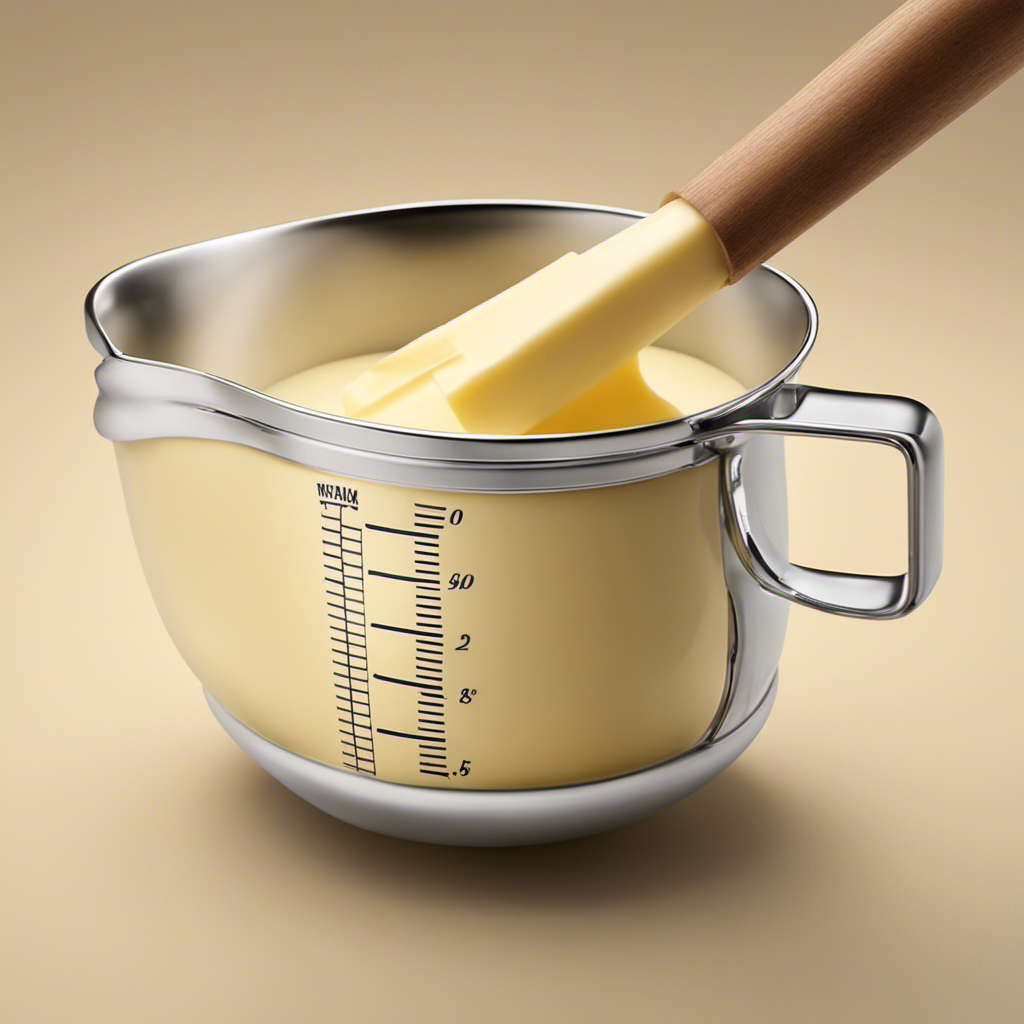
 Butter Tips and Tricks8 months ago
Butter Tips and Tricks8 months agoHow Many Tablespoons of Butter in 3/4 Cup: A Simple Guide
-

 Butter Basics5 months ago
Butter Basics5 months agoQuick Conversion: How Many Tablespoons of Butter Is 1/4 Cup?
-
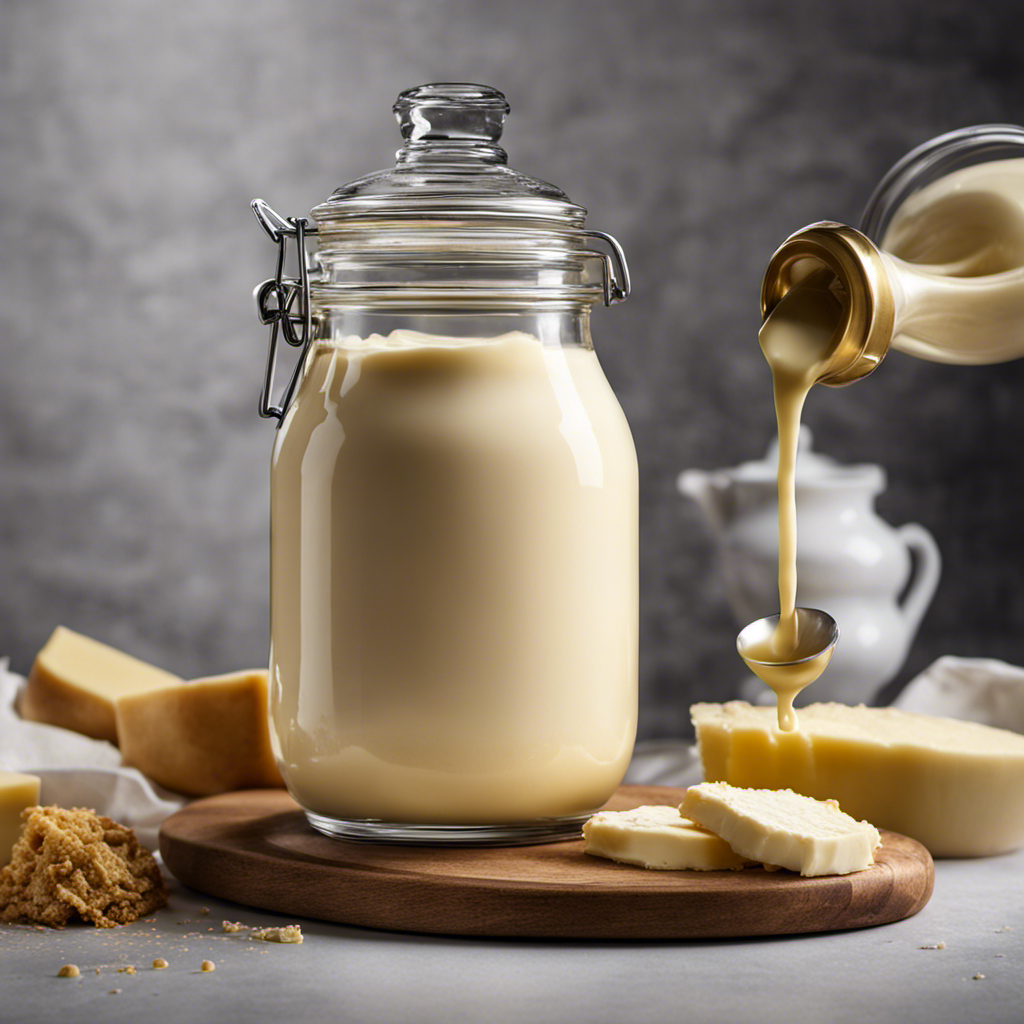
 Butter Tips and Tricks8 months ago
Butter Tips and Tricks8 months agoHow Much Heavy Cream to Make Butter: A Step-by-Step Guide
-
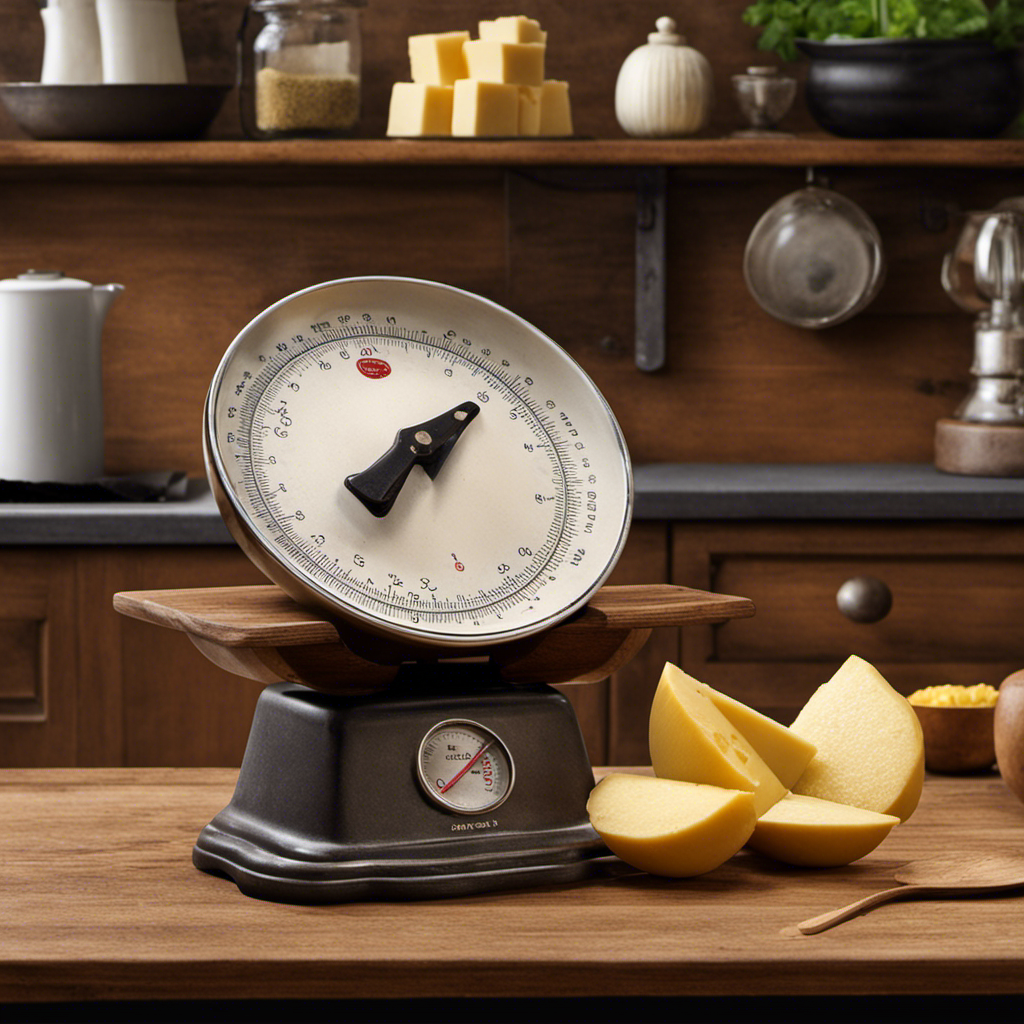
 Butter Tips and Tricks8 months ago
Butter Tips and Tricks8 months agoHow Many Sticks of Butter in 2/3 Cup: A Simple Guide
-

 Recipes & Culinary Uses7 months ago
Recipes & Culinary Uses7 months agoHow Many Sticks of Butter Equals a Pound: A Handy Guide




